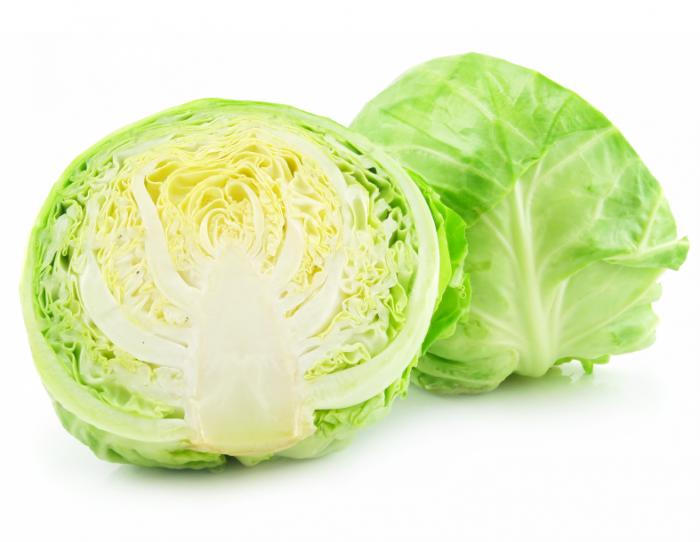


| Moisture | 91.9% | Protein | 1.8% |
|---|---|---|---|
| Fat | 0.1% | Minerals | 0.6% |
| Fibre | 1.0% | Carbohydrates | 4.7% |
| Calcium | 39 mg | Phosphorus | 44 mg |
| Iron | 0.8 mg | Vitamin C | 124 mg |
There are several varieties of cabbage differ in size, shape, and colour of leaves.The cabbage was cultivated long before the dawn of human history. The original home of cabbage is Southern Europe and the Mediterranean regions, also cultivated in Northern India, Indonesia, Malaysia, the Phillippines, Central, East and West Africa, Central and South America and the Caribbean.
The cabbage has wonderful cleansing and reducing properties. it has high sulphur and chlorine content, and iodine. The combination of sulphur and chlorine causes a cleansing of the mucus membranes of the stomach and intestinal tract, but this only applies when cabbage or its juice is taken in its raw state without the addition of salt.
cabbage and cabbage juice should never be taken as a main part of the diet. Very excessive intakes can cause the thyroid disease goitre. It is only in normal amounts that cabbage is valuable nutritionally and that its juice, which is bitter and not delicious, constitutes an important part of the natural treatement of infection, ulcers and other disorders of the digestive system.
Visit Our Twitter Account,follow on Facebook and Twitter
© 2016 Aayurveda Online. All rights reserved | Design by Adhyatmik